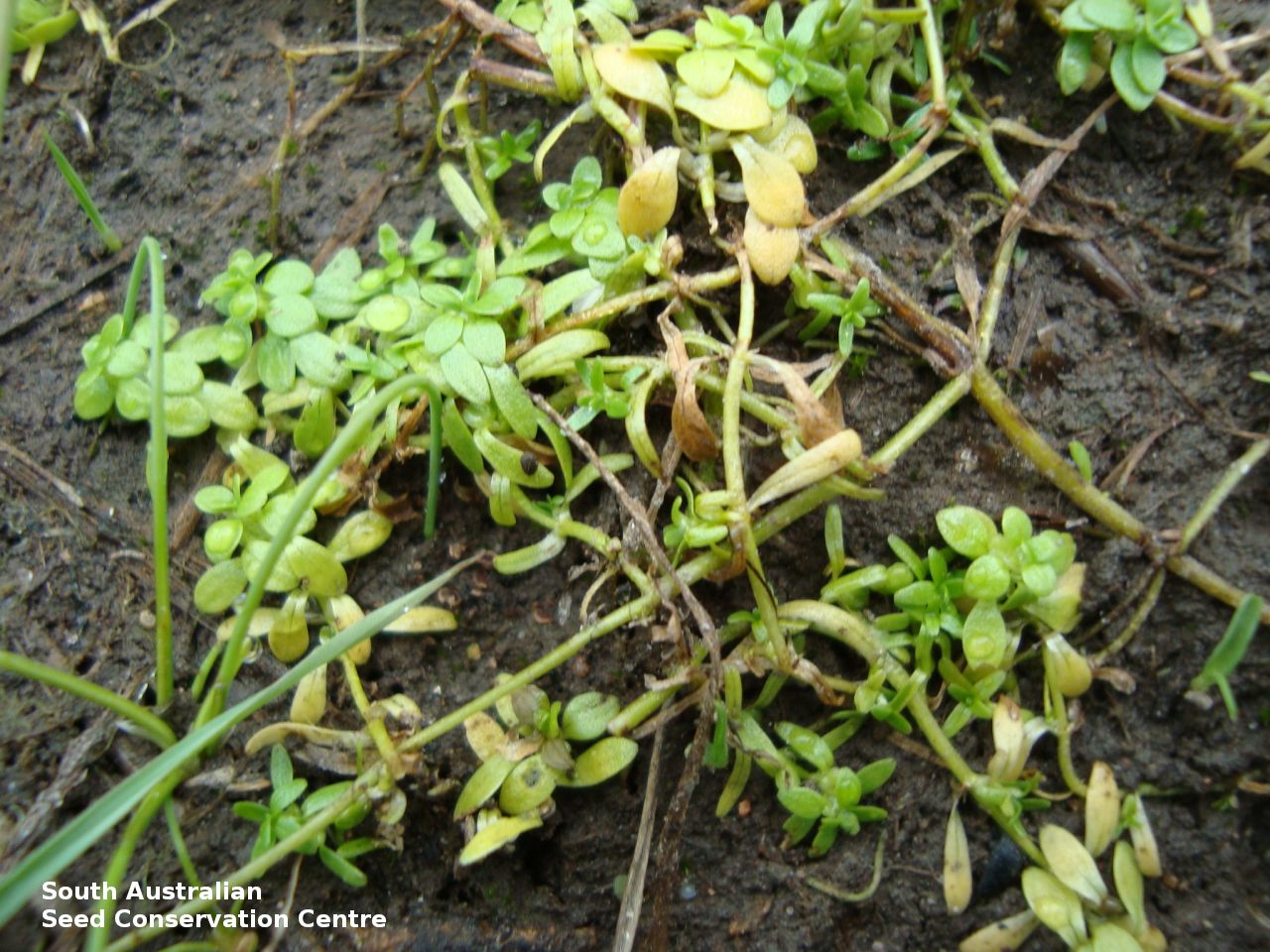
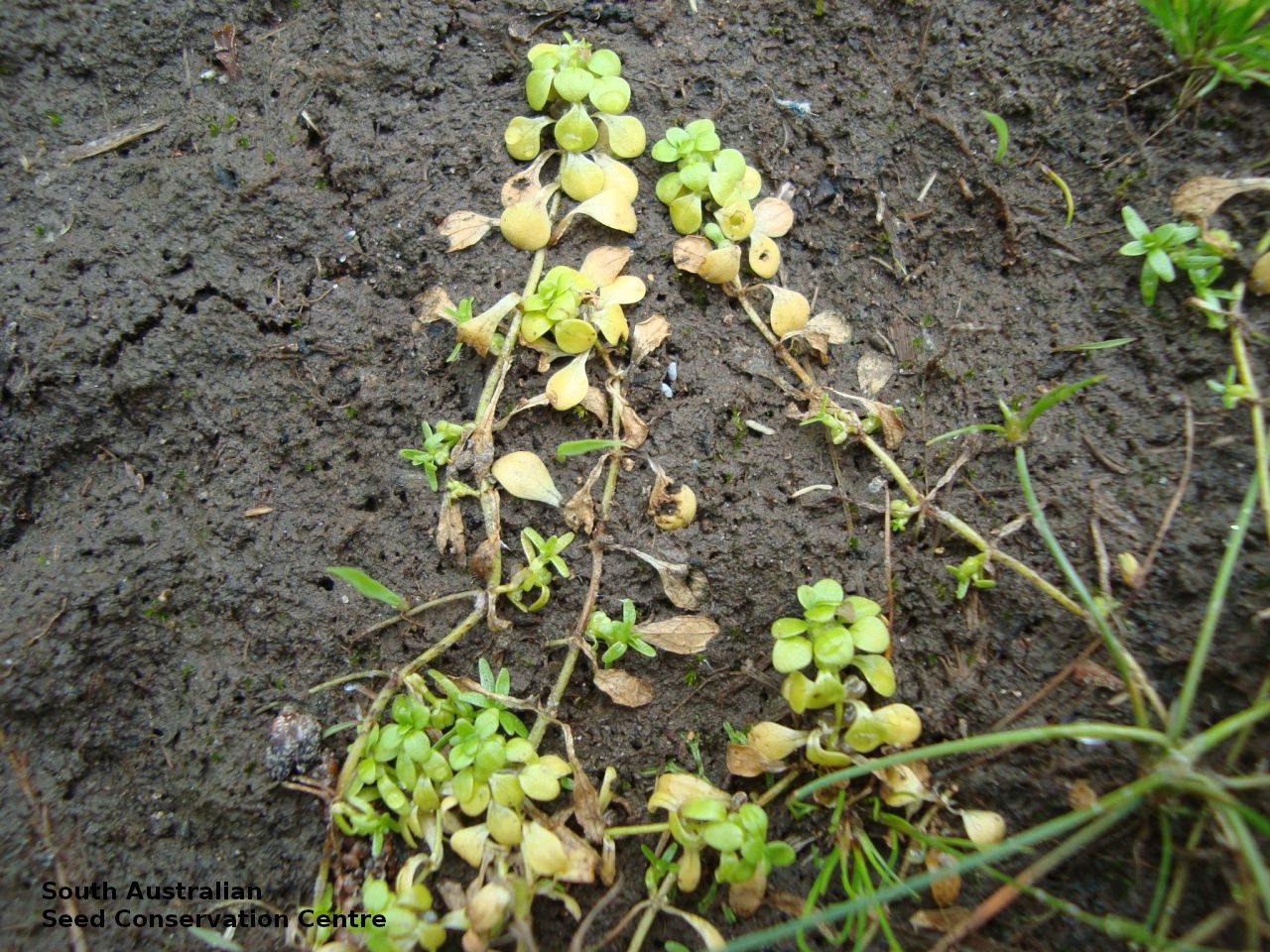
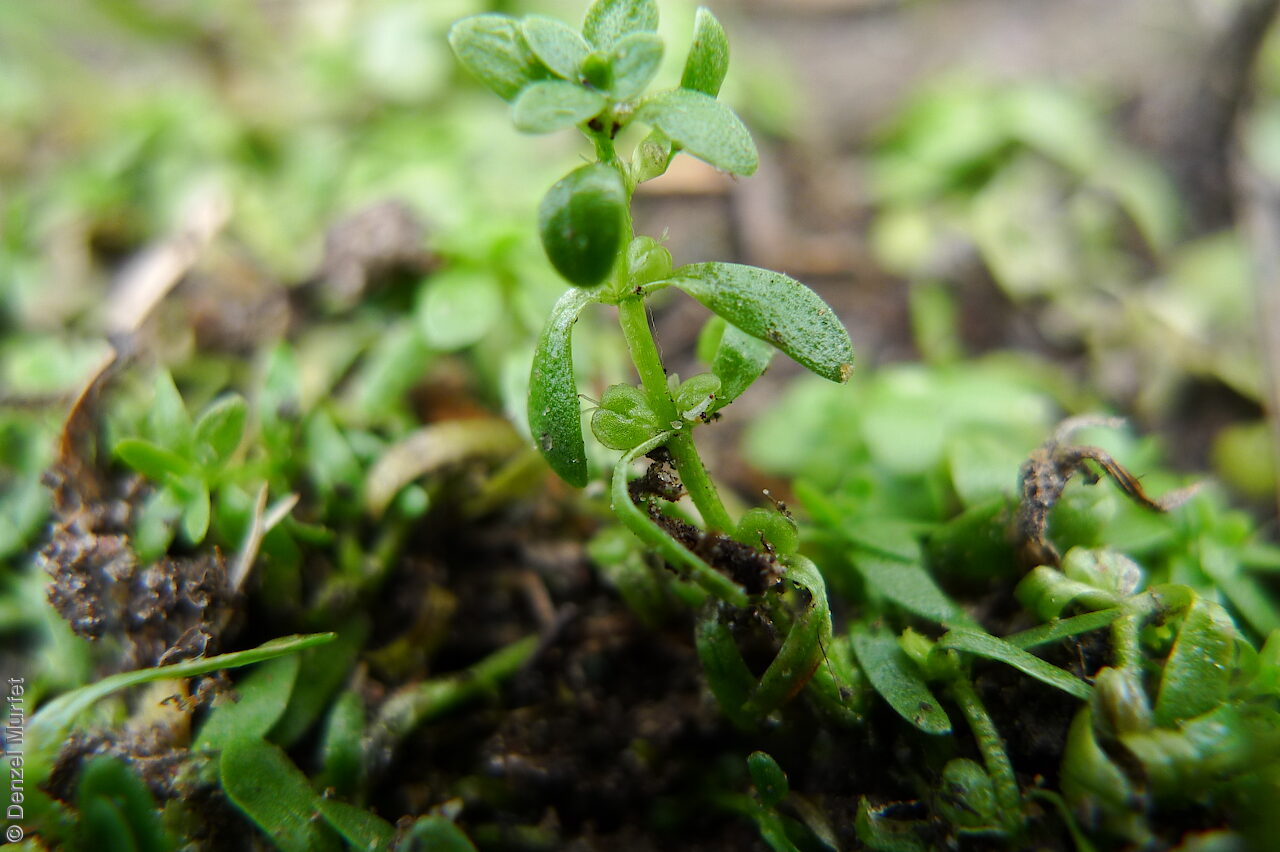
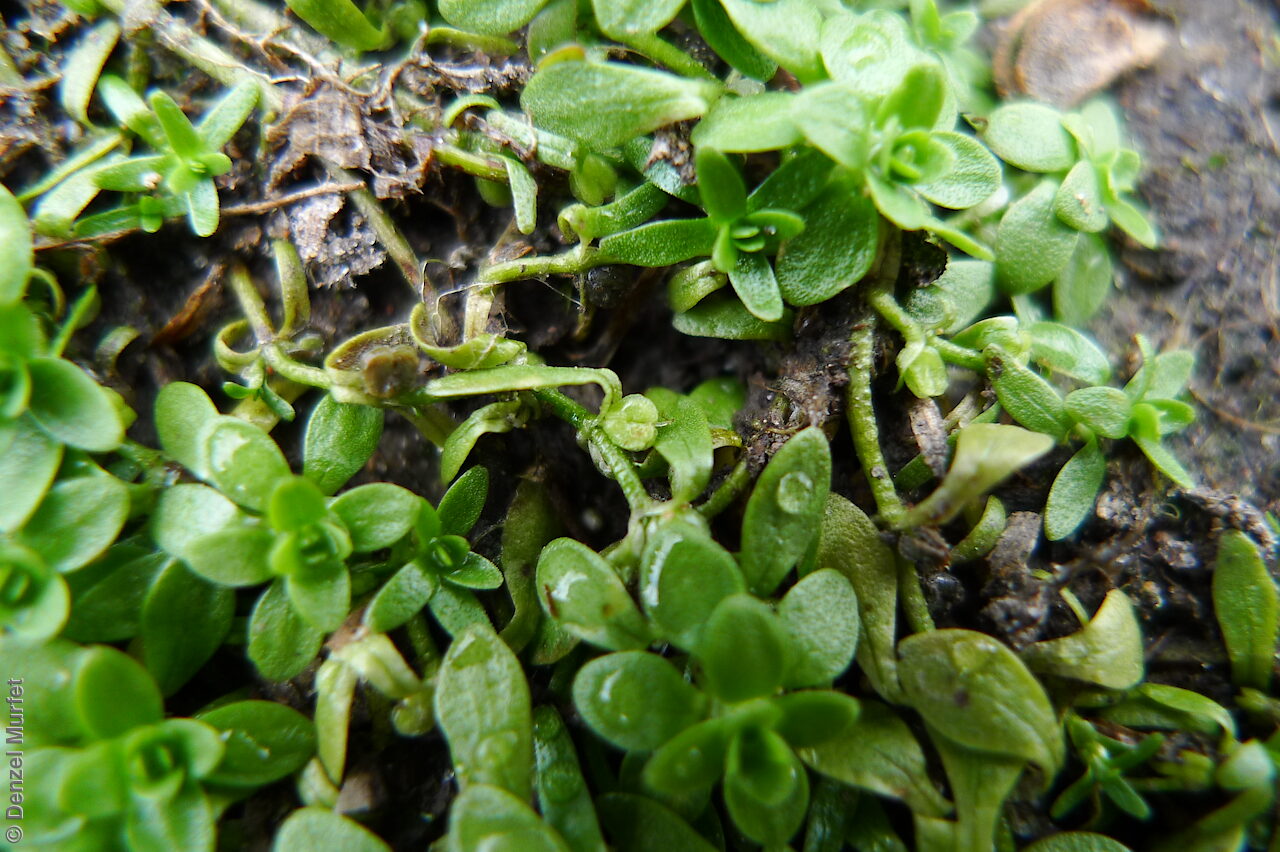

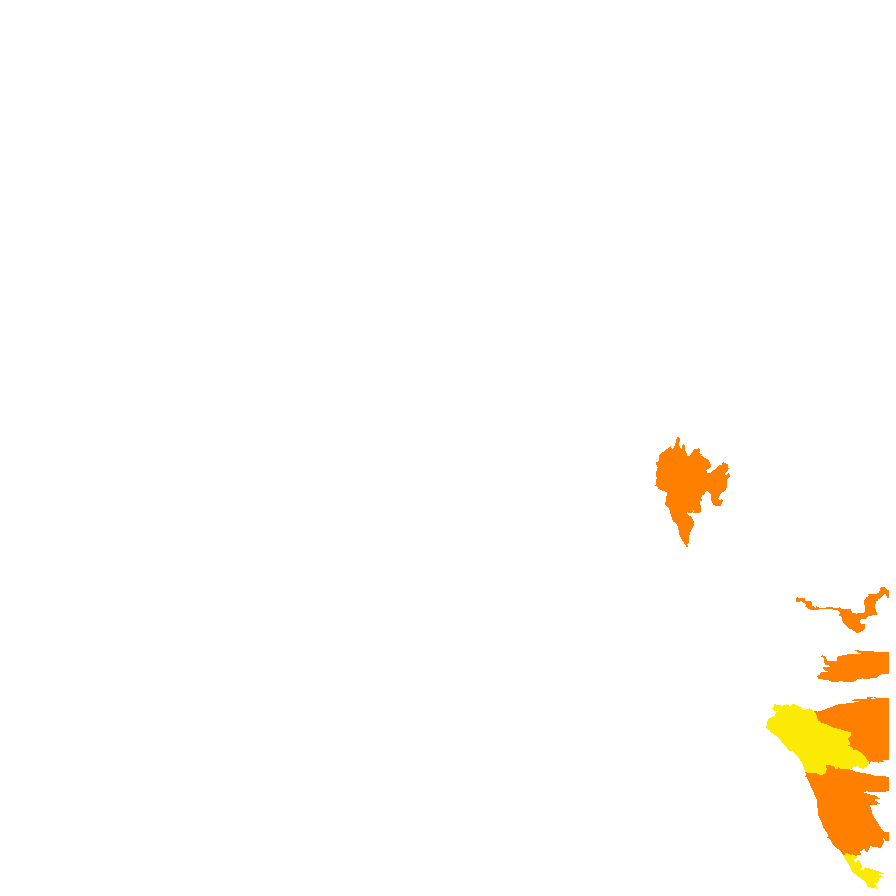
Prior names
Callitriche cyclocarpa
Etymology
Callitriche from the Greek 'kallos' meaning beautiful and 'thrix' or 'trikhos' meaning hair, referring to the beautiful hairy stems. Umbonata mean with a raised central boss or hump.
Distribution and status
Found along the Murray River and the South-east in South Australia, growing in damp and swampy places. Also found in New South Wales, Victoria and Tasmania. Native. Rare in South Australia. Rare in the other States.
Herbarium regions: Murray, South Eastern
NRM regions: South Australian Murray-Darling Basin, South East
AVH map: SA distribution map (external link)
Plant description
Mostly amphibious, spreading or submerged. Leaves in aquatic plants dimorphic with lower leaves linear, to 20 mm long and 1 mm wide, 1-veined, tapering towards tip. Upper leaves rosette, obovate, to 10 mm long and 4 mm wide, 3-5-veined, linear leaves absent-in terrestrial plant. Flowers solitary in the axils of the leaves, the females often in opposite axils, white. Flowering between August and December. Fruits are dark-brown to grey capsule to 1.5 mm long and 1.2 mm wide, slightly longer than wide, thickened at base, wing prominent.
Seed collection and propagation
Collect seeds between November and January. Collect mature capsules, those that are turning a pale straw colour and contain hard seeds. Can collect individual capsules or break off the whole stems. Place the capsules in a tray and leave to dry for two weeks. Then rub the capsules gently by hand to dislodge the seeds. Use a sieve to separate the unwanted material. Store the seeds with a desiccant such as dried silica beads or dry rice, in an air tight container in a cool and dry place.
| Location | No. of seeds (weight grams) | Number of plants | Date collected | Collection number Collection location | Date stored | % Viability | Storage temperature |
|---|---|---|---|---|---|---|---|
| MSB | 8,500 (1.138 g) | 50+ | 23-Oct-2008 | DJD1352 South Eastern | 100% |
Number of plants: This is the number of plants from which the seeds were collected.
Collection location: The Herbarium of South Australia's region name.
% Viability: Percentage of filled healthy seeds determined by a cut test or x-ray.